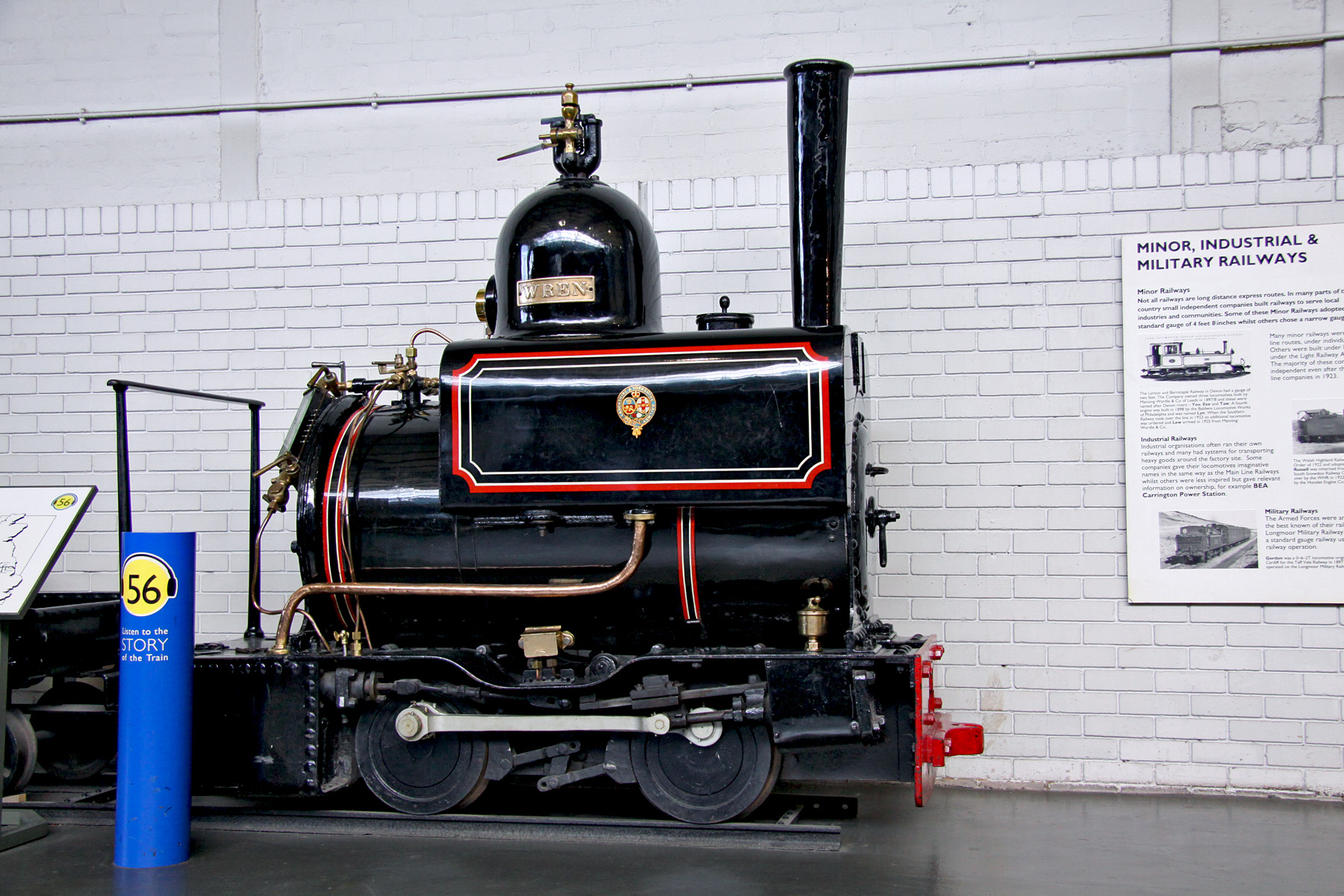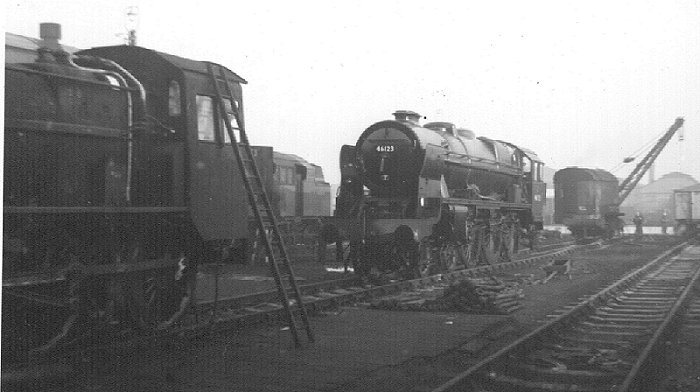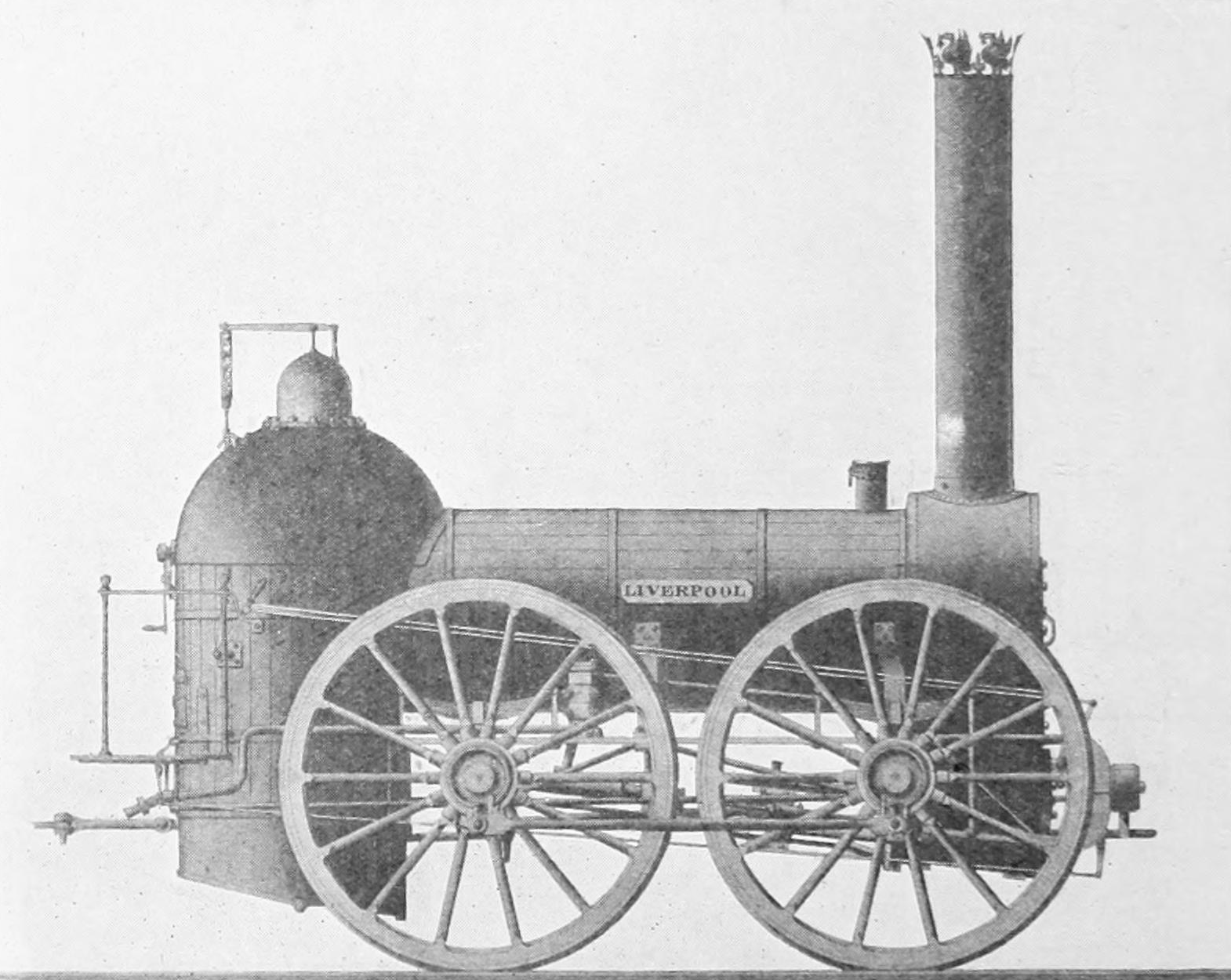|
Locomotives Of The Lancashire And Yorkshire Railway
Locomotives of the Lancashire and Yorkshire Railway. The Lancashire and Yorkshire Railway locomotive works were originally at Miles Platting, Manchester. From 1889 they were at Horwich. Constituent companies The L&YR came into being in 1847 when the Manchester and Leeds Railway changed its name. Locomotives added to its stock before that date came from the: * Manchester and Bolton Railway ''(amalgamated 18 August 1846)'' * North Union Railway ''(a share acquired 31 December 1846)'' As the L&YR, locomotives were taken into stock from the: * Preston & Wyre Railway, Harbour and Dock Co. ''(vested L&Y (two thirds) and L&NWR (one third) 28 July 1849)'' * Blackburn, Darwen and Bolton Railway ''(amalgamated jointly with the East Lancashire Railway 1 January 1858)'' * Liverpool, Crosby and Southport Railway ''(purchased 14 June 1855)'' * Preston and Longridge Railway ''(taken over jointly with the L&NWR 17 June 1867)'' * Blackburn and Preston Railway ''(amalgamated with the East Lanc ... [...More Info...] [...Related Items...] OR: [Wikipedia] [Google] [Baidu] |
Lancashire And Yorkshire Railway
The Lancashire and Yorkshire Railway (L&YR) was a major British railway company before the 1923 Grouping. It was incorporated in 1847 from an amalgamation of several existing railways. It was the third-largest railway system based in northern England (after the Midland and North Eastern Railways). The intensity of its service was reflected in the 1,650 locomotives it owned – it was by far the most densely-trafficked system in the British Isles with more locomotives per mile than any other company – and that one third of its 738 signal boxes controlled junctions averaging one every . No two adjacent stations were more than apart and its 1,904 passenger services occupied 57 pages in '' Bradshaw'', a number exceeded only by the Great Western Railway, the London and North Western Railway, and the Midland Railway. It was the first mainline railway to introduce electrification of some of its lines, and it also ran steamboat services across the Irish Sea an ... [...More Info...] [...Related Items...] OR: [Wikipedia] [Google] [Baidu] |
William Hurst (civil Engineer)
William Hurst (1810-1890) was a Scottish civil engineer noted for his involvement in early railway construction in Britain. Life He was born in Markinch in Fife on 5 January 1810. He served an apprenticeship as an engineer in Liverpool Docks from 1824. In 1845 he became the Railway Superintendent of the Manchester and Bolton Railway based at Salford. In 1846 the company was absorbed into the Manchester and Leeds Railway and then in 1847 became part of the Lancashire and Yorkshire Railway. In 1849 he moved from Salford to Miles Platting. Together with Richard Hodgson and Thomas Rowbotham they brought the new railway company to a high level of success. In 1867 he became Locomotive Superintendent of the North British Railway. In this role he constructed 22 locomotives in Leith and a further two in Burntisland. Hurst at this time was earning £1200 per annum, more than twice the norm for engineers in the same role. In a scandal of 1867 Hurst and his two partners were forced to resig ... [...More Info...] [...Related Items...] OR: [Wikipedia] [Google] [Baidu] |
Crewe Works
Crewe Works is a British railway engineering facility located in the town of Crewe, Cheshire. The works, which was originally opened by the Grand Junction Railway in 1840, employed around 7,000 to 8,000 workers at its peak. In the 1980s, a lot of the engineering works were closed. Much of the site has been redeveloped but the remaining parts are owned and operated by French-owned multinational rolling stock manufacturer, Alstom SA. During the late 19th century, the London and North Western Railway used Crewe Works to produce many famous locomotives such as the Webb Jumbo class and the compounds, the Whale Experiment and Precursor classes, and the Bowen-Cooke Claughtons. In particular, Whale's 1912 superheated G1 Class developed from a locomotive introduced by Webb in 1892, lasted, in many cases until 1964, near the end of steam in 1968. After grouping, the works were taken over by London, Midland and Scottish Railway which was the successor to the LNWR. It was during ... [...More Info...] [...Related Items...] OR: [Wikipedia] [Google] [Baidu] |
William Yates (engineer)
William, Bill, or Billy Yates may refer to: * William Yates (died 1558 or 1559) (1505–1558/1559), Member of Parliament for Lincoln *William Yates (college president) (1720–1764), College of William & Mary's fifth president (1761–1764) * William Yates (missionary) (1792–1845), Baptist missionary to India * William Yates (athlete) (1880–1967), British Olympic racewalker * William Yates (footballer) (1883–?), English footballer *William Yates (politician) (1921–2010), British and Australian politician * William H. Yates (died 1868), American abolitionist and writer * Bill Yates (footballer) (1903–1978), English footballer and cricketer *Bill Yates (1921–2001), American cartoonist *Billy Yates (American football) (born 1980), professional offensive lineman *Billy Yates (singer) (born 1963), American country singer ** ''Billy Yates'' (album), his self-titled debut album See also *William Butler Yeats (pronounced Yates, 1865–1939), poet & dramatist * Billy Yeats (prono ... [...More Info...] [...Related Items...] OR: [Wikipedia] [Google] [Baidu] |
2-4-0
Under the Whyte notation for the classification of steam locomotives, represents the wheel arrangement of two leading wheels on one axle, four powered and coupled driving wheels on two axles and no trailing wheels. The notation 2-4-0T indicates a tank locomotive of this wheel arrangement, on which its water and fuel is carried on board the engine itself, rather than in an attached tender. Overview The 2-4-0 configuration was developed in the United Kingdom in the late 1830s or early 1840s as an enlargement of the 2-2-0 and 2-2-2 types, with the additional pair of coupled wheels giving better adhesion. The type was initially designed for freight haulage. One of the earliest examples was the broad-gauge GWR Leo Class, designed by Daniel Gooch and built during 1841 and 1842 by R. & W. Hawthorn, Leslie and Company; Fenton, Murray and Jackson; and Rothwell, Hick and Rothwell. Because of its popularity for a period with English railways, noted railway author C. Hamilton Ellis ... [...More Info...] [...Related Items...] OR: [Wikipedia] [Google] [Baidu] |
0-6-0ST
Steam tank locomotives of the 0-6-0 wheel arrangement in Whyte notation Whyte notation is a classification method for steam locomotives, and some internal combustion locomotives and electric locomotives, by wheel arrangement. It was devised by Frederick Methvan Whyte, and came into use in the early twentieth cen .... 6,0-6-0T 6,0-6-0T {{CatAutoTOC ... [...More Info...] [...Related Items...] OR: [Wikipedia] [Google] [Baidu] |
0-6-0
Under the Whyte notation for the classification of steam locomotives, represents the wheel arrangement of no leading wheels, six powered and coupled driving wheels on three axles and no trailing wheels. This was the most common wheel arrangement used on both tender and tank locomotives in versions with both inside and outside cylinders. In the United Kingdom, the Whyte notation of wheel arrangement was also often used for the classification of electric and diesel-electric locomotives with side-rod coupled driving wheels. Under the UIC classification, popular in Europe, this wheel arrangement is written as C if the wheels are coupled with rods or gears, or Co if they are independently driven, the latter usually being electric and diesel-electric locomotives. Overview History The 0-6-0 configuration was the most widely used wheel arrangement for both tender and tank steam locomotives. The type was also widely used for diesel switchers (shunters). Because they lack leading a ... [...More Info...] [...Related Items...] OR: [Wikipedia] [Google] [Baidu] |
Bury, Curtis, And Kennedy
Bury, Curtis and Kennedy was a steam locomotive manufacturer in Liverpool, England. Edward Bury established the works in 1826, under the name Edward Bury and Company. He employed James Kennedy as foreman; Kennedy later became a partner. About 1828, the firm moved to bigger premises in Love Lane, Liverpool, known as the Clarence Foundry. Locomotives Their first engine was built in 1830. Called ''Dreadnought'', it ran on the Liverpool and Manchester Railway. It was objected to because it was on six wheels and was sold to the Bolton & Leigh Railway. The second, the four-coupled ''Liverpool'', later in 1830, used a cranked driving axle, and was also objected to (by George Stephenson) because the 6 ft diameter wheels were too big. The Bury type However, they refined their designs and the resulting and locomotives quickly became a standard which was emulated by many other manufacturers, becoming known as the "Bury type". Distinguishing features of these engines were inside ... [...More Info...] [...Related Items...] OR: [Wikipedia] [Google] [Baidu] |
2-2-2
Under the Whyte notation for the classification of steam locomotives, 2-2-2 represents the wheel arrangement of two leading wheels on one axle, two powered driving wheels on one axle, and two trailing wheels on one axle. The wheel arrangement both provided more stability and enabled a larger firebox than the earlier 0-2-2 and 2-2-0 types. This configuration was introduced in 1834 on Robert Stephenson's ' Patentee locomotive' but it was later popularly named Jenny Lind, after the Jenny Lind locomotive which in turn was named after the popular singer. They were also sometimes described as Singles, although this name could be used to describe any kind of locomotive with a single pair of driving wheels. Equivalent classifications Other equivalent classifications are: *UIC classification: 1A1 (also known as German classification and Italian classification) *French classification: 111 *Turkish classification: 13 *Swiss classification: 1/3 History The 2-2-2 configuration appears to ha ... [...More Info...] [...Related Items...] OR: [Wikipedia] [Google] [Baidu] |
0-4-2
Under the Whyte notation for the classification of steam locomotives, represents the wheel arrangement with no leading wheels, four powered and coupled driving wheels on two axles and two trailing wheels on one axle. While the first locomotives of this wheel arrangement were tender engines, the configuration was later often used for tank engines, which is noted by adding letter suffixes to the configuration, such as for a conventional side-tank locomotive, for a saddle-tank locomotive, for a well-tank locomotive and for a rack-equipped tank locomotive. The arrangement is sometimes known as Olomana after a Hawaiian 0-4-2 locomotive of 1883. Overview The earliest recorded locomotives were three goods engines built by Robert Stephenson and Company for the Stanhope and Tyne Railway in 1834. The first locomotive built in Germany in 1838, the '' Saxonia'', was also an . In the same year Todd, Kitson & Laird built two examples for the Liverpool and Manchester Railway, one ... [...More Info...] [...Related Items...] OR: [Wikipedia] [Google] [Baidu] |
Edward Bury
Edward Bury (22 October 1794 – 25 November 1858) was an English locomotive manufacturer. Born in Salford, Lancashire, he was the son of a timber merchant and was educated at Chester. Career By 1823 he was a partner in Gregson and Bury's steam sawmill at Toxteth Park, Liverpool, but in 1826 he set himself up as an iron-founder and engineer. His original premises were in Tabley Street near the Liverpool and Manchester Railway's workshops. He hoped to supply locomotives to that line, but opposition from the L&M Engineer, George Stephenson, thwarted this. Clarence Foundry & Steam Engine Works He moved his works to new premises in Love Lane, Liverpool, on the Leeds and Liverpool Canal and near the Clarence Dock, hence the name 'Clarence Foundry and Steam Engine Works'. Around this time he recruited as his manager James Kennedy, who had gained locomotive building experience working for George Stephenson and Mather, Dixon and Company. The first locomotive built by Edward Bury and C ... [...More Info...] [...Related Items...] OR: [Wikipedia] [Google] [Baidu] |
William Fairbairn & Sons
William Fairbairn and Sons, was an engineering works in Manchester, England. History William Fairbairn opened an iron foundry in 1816 and was joined the following year by a Mr. Lillie, and the firm became known as Fairbairn and Lillie Engine Makers, producing iron steamboats. Their foundry and millwrighting factory burned down on 6 August 1831 with damage estimated at £8,000. The business survived this event. Shipbuilding In 1830, they built the iron paddle-steamer ''Lord Dundas'', for use on the Forth and Clyde Canal. She proved so successful that the firm built eight more of a larger size within the next two or three years for Scottish canals, two passenger-boats with 40 horsepower engines for the Humber and two for the lakes of Zurich and Walenstadt in Switzerland, which, after being tried, were sent out dismantled. [...More Info...] [...Related Items...] OR: [Wikipedia] [Google] [Baidu] |




.jpg)



